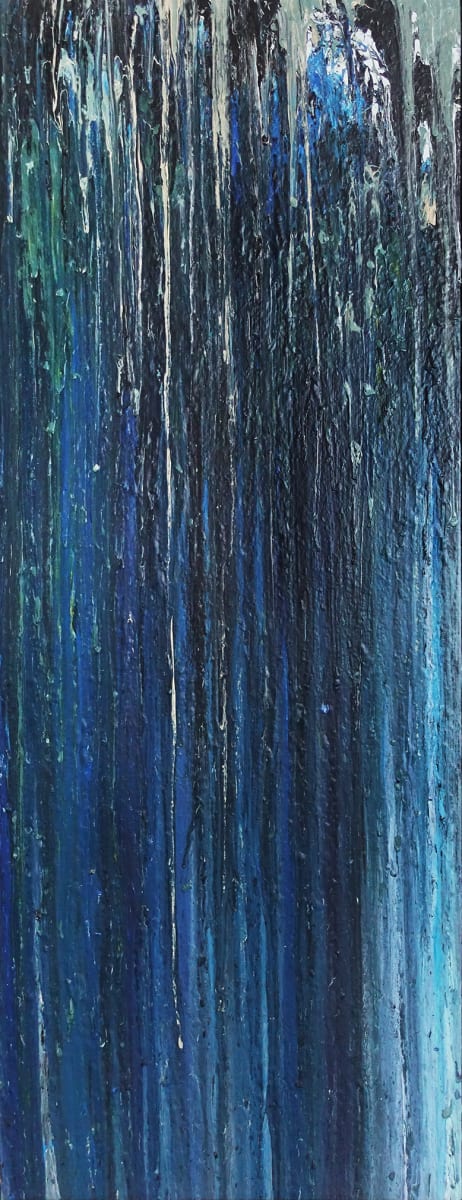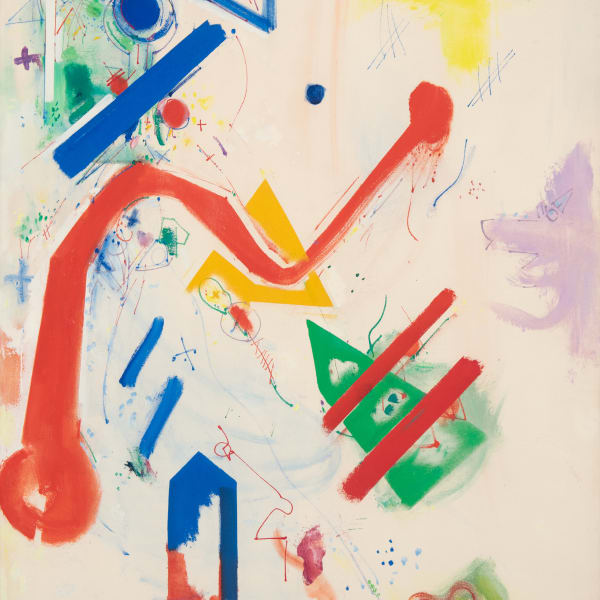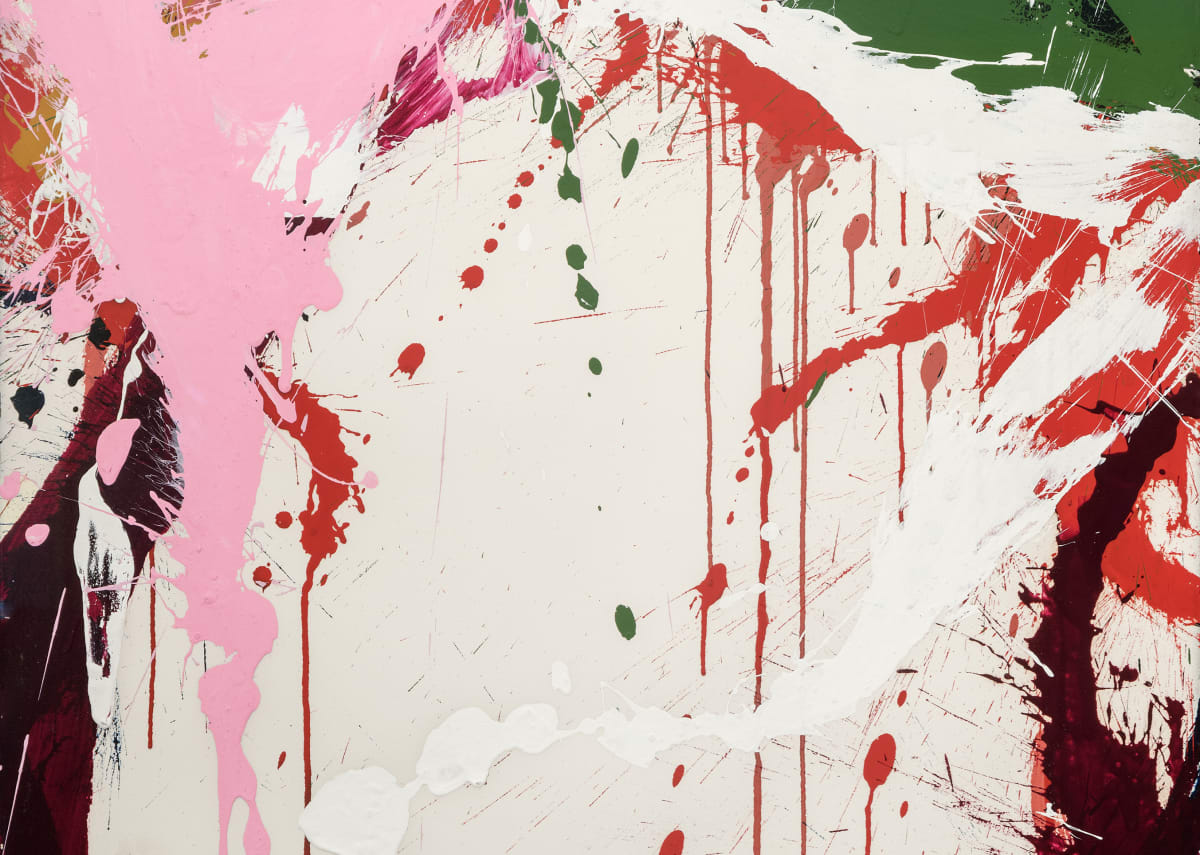
His degrees of impasto and experimental approaches to paint application resulted in “a sculptural, even coarsely physical feeling
Artist Larry Poons was active in New York’s avant-garde in the years just after the first full flowering of Abstract Expressionism, when artistic possibilities were unfolding rapidly, and in many directions. Poons moved to New York in 1958, at age 21, and soon met and befriended Barnett Newman. Newman’s work became important to Poons as an example of all-over painting that led the eye to the very edges of the canvas. He also met Henry Geldzahler, who encouraged Poons to simplify his work and introduced him to the geometric abstractions of Frank Stella.
Artist Larry Poons was active in New York’s avant-garde in the years just after the first full flowering of Abstract Expressionism, when artistic possibilities were unfolding rapidly, and in many directions. Poons moved to New York in 1958, at age 21, and soon met and befriended Barnett Newman. Newman’s work became important to Poons as an example of all-over painting that led the eye to the very edges of the canvas. He also met Henry Geldzahler, who encouraged Poons to simplify his work and introduced him to the geometric abstractions of Frank Stella.
At this early stage, Poons worked in a geometric Op art style that drew ideas from both Bauhaus and Minimalist theory. Poons’ first solo show was at the Green Gallery in 1963, the same year his work was included in the important Jewish Museum exhibition Toward a New Abstraction. Work by Poons was included the key exhibitions of Op art, including the Museum of Modern Art’s The Responsive Eye in 1965, and the Metropolitan Museum of Art’s New York Painting and Sculpture 1940–70 in 1969, curated by Geldzahler.
The artist Jules Olitski was seminal in Poons’ discovery of his most recognizable expressionistic drip style. After seeing Olitski’s exhibition at the Metropolitan Museum of Art in 1969, Poons realized that expanded artistic possibilities allowed for more unconventional processes, and immediately began his search for a less traditional method. Furthermore, from Olitski, Poons “learned to deliberately avoid self-conscious crafting and also to program more spontaneity and surprise into his way of working … Olitski helped Poons to conceive of abstract painting in a much freer way -- a way that had a great deal to do with attitudes and painting procedures and nothing at all to do with preconceived or preplanned graphic systems.” (1)
These expanded horizons led Poons to explore surface effects of paint on canvas. He began to pour, slosh, and drip paint onto the surface; first on the floor and later tacked up to the wall. His move to the wall proved integral, as there he could experiment with the effects of gravity as it pulled paint down the canvas, producing a powerful directional layout. Poons worked with long rolls of canvas that he would cut only after the paint had dried, “finding” the painting within the larger canvas. This allowed him to work freely, almost automatically, and therefore to achieve an extraordinary visual drama. His degrees of impasto and experimental approaches to paint application resulted in “a sculptural, even coarsely physical feeling” that was reminiscent of the work of Jackson Pollock. (2)
Poons’ constant investigation of abstraction’s potential has continued to the present; he lives and works in New York City, where he also teaches painting at the Art Students League. His work is held by most important collections of American art.
1. Kenworth Moffett, Larry Poons: Paintings, 1971-1981. Boston: Museum of Fine Arts Boston, 1981. n.p.
2. Ibid.













